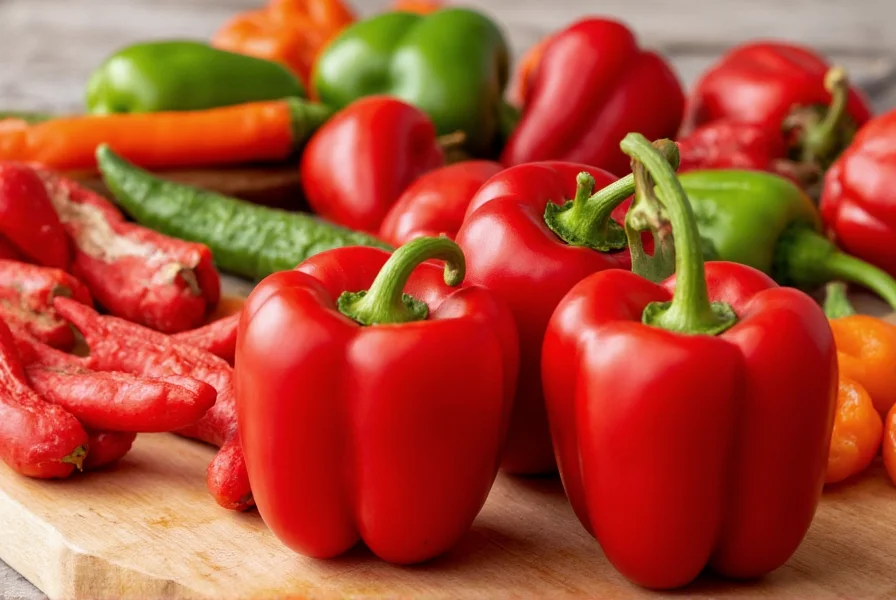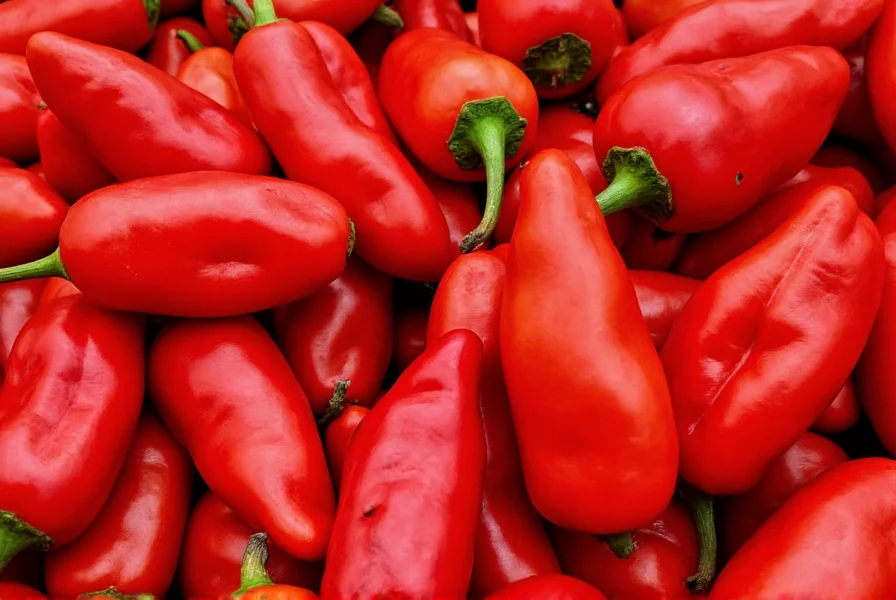When exploring the red pepper in culinary contexts, it's essential to understand this versatile ingredient encompasses multiple varieties with distinct characteristics. Unlike their green counterparts, red peppers have undergone full ripening on the plant, resulting in sweeter flavor profiles and enhanced nutritional content. This maturation process explains why red bell peppers cost more than other color varieties at most grocery stores.
Understanding Red Pepper Varieties
Not all red peppers are created equal. The term encompasses several distinct types:
| Pepper Type | Heat Level (Scoville) | Primary Uses |
|---|---|---|
| Red Bell Pepper | 0 | Raw salads, roasting, stuffed dishes |
| Cayenne | 30,000-50,000 | Spice blends, hot sauces, seasoning |
| Poblano (when red) | 1,000-2,000 | Chiles Rellenos, mole sauces |
| Red Jalapeño | 2,500-8,000 | Salsas, pickling, garnishes |
The most commonly referenced red pepper in everyday cooking is the bell pepper variety, prized for its thick walls, sweet flavor, and versatility. When comparing red pepper vs green pepper nutrition, the red variety contains nearly 11 times more beta-carotene and 1.5 times more vitamin C than its unripe green counterpart.
Nutritional Powerhouse: Health Benefits of Red Peppers
Red peppers represent one of nature's most concentrated sources of essential nutrients. A single medium red bell pepper provides:
- 169% of daily vitamin C requirements
- 93% of daily vitamin A needs
- Significant amounts of vitamin B6, potassium, and folate
- Only 37 calories per serving
Research shows that the nutritional benefits of red bell peppers extend beyond basic vitamins. The carotenoids lycopene and beta-carotene found in red peppers demonstrate potent antioxidant properties that may help reduce inflammation and protect against certain chronic diseases. Unlike many vegetables, red peppers retain most nutrients whether consumed raw or cooked, though roasting enhances the absorption of fat-soluble compounds.

Culinary Applications and Flavor Pairings
The sweet, slightly fruity flavor of red peppers makes them incredibly versatile in the kitchen. Professional chefs recommend these pairing strategies when how to cook with red peppers:
- Roasting: Brings out natural sugars and creates complex flavor depth
- Raw in salads: Adds crunch and vibrant color to green salads
- Stuffed dishes: Works well with grain and protein fillings
- Blended sauces: Creates smooth, sweet bases for pasta sauces
When developing recipes featuring red peppers, consider complementary flavors like garlic, basil, balsamic vinegar, feta cheese, and smoked paprika. The natural sweetness balances beautifully with acidic and salty components, making red peppers ideal for creating complex flavor profiles without added sugars.
Selecting and Storing Red Peppers
Choosing quality red peppers requires attention to specific characteristics. Look for:
- Firm, taut skin without wrinkles or soft spots
- Vibrant, consistent color throughout
- Heavy weight relative to size (indicates thick walls)
- Fresh, green stem (avoid brown or dried stems)
Proper storage extends freshness significantly. Keep whole red peppers in the crisper drawer of your refrigerator for up to 2 weeks. For growing red bell peppers at home enthusiasts, harvest when peppers develop full, deep color and feel firm to the touch. Never store peppers near ethylene-producing fruits like apples or bananas, as this accelerates ripening and spoilage.
Growing Red Peppers: Basic Considerations
For gardeners interested in cultivating their own supply, red peppers require specific growing conditions. Bell peppers typically take 80-100 days to reach full red maturity from transplanting. The color change from green to red occurs as chlorophyll breaks down and carotenoids develop during extended time on the plant.
Successful pepper cultivation depends on:
- Warm temperatures (70-85°F ideal)
- Full sun exposure (6-8 hours daily)
- Well-draining soil with consistent moisture
- Patience for full color development (leaving peppers on plant longer)
Many home gardeners mistakenly harvest peppers when they're still green, missing out on the superior flavor and nutrition of fully ripened red varieties. Understanding this maturation process explains why red peppers take longer to grow than their green counterparts.
Common Questions About Red Peppers
Why are red peppers more expensive than green peppers?
Red peppers cost more because they remain on the plant significantly longer to reach full ripeness. This extended growing period requires more resources and reduces overall yield per plant compared to harvesting peppers at the green stage. The additional time allows development of more complex sugars and higher nutrient concentrations, justifying the premium price.
Are red peppers hotter than green peppers?
Bell peppers follow an opposite pattern to chili peppers. Red bell peppers are actually sweeter and milder than green bell peppers of the same variety. However, for chili pepper varieties, the heat level generally remains consistent regardless of color, though flavor profiles may change as they ripen from green to red.
Can you substitute red pepper flakes for fresh red peppers?
Red pepper flakes and fresh red peppers serve different culinary purposes and aren't direct substitutes. Red pepper flakes provide concentrated heat from dried, crushed chili peppers, while fresh red peppers offer sweetness and texture. For recipes requiring fresh red peppers, consider using a combination of green bell peppers with a pinch of red pepper flakes to approximate both sweetness and heat.
How do you reduce the heat of spicy red peppers?
To reduce heat in spicy red peppers, remove the white membranes and seeds where capsaicin concentration is highest. Soaking sliced peppers in salted water for 15-20 minutes can further reduce heat. Cooking peppers also diminishes spiciness, as heat breaks down capsaicin compounds. For extremely hot varieties, consider using less quantity and balancing with dairy products or acidic ingredients.











 浙公网安备
33010002000092号
浙公网安备
33010002000092号 浙B2-20120091-4
浙B2-20120091-4